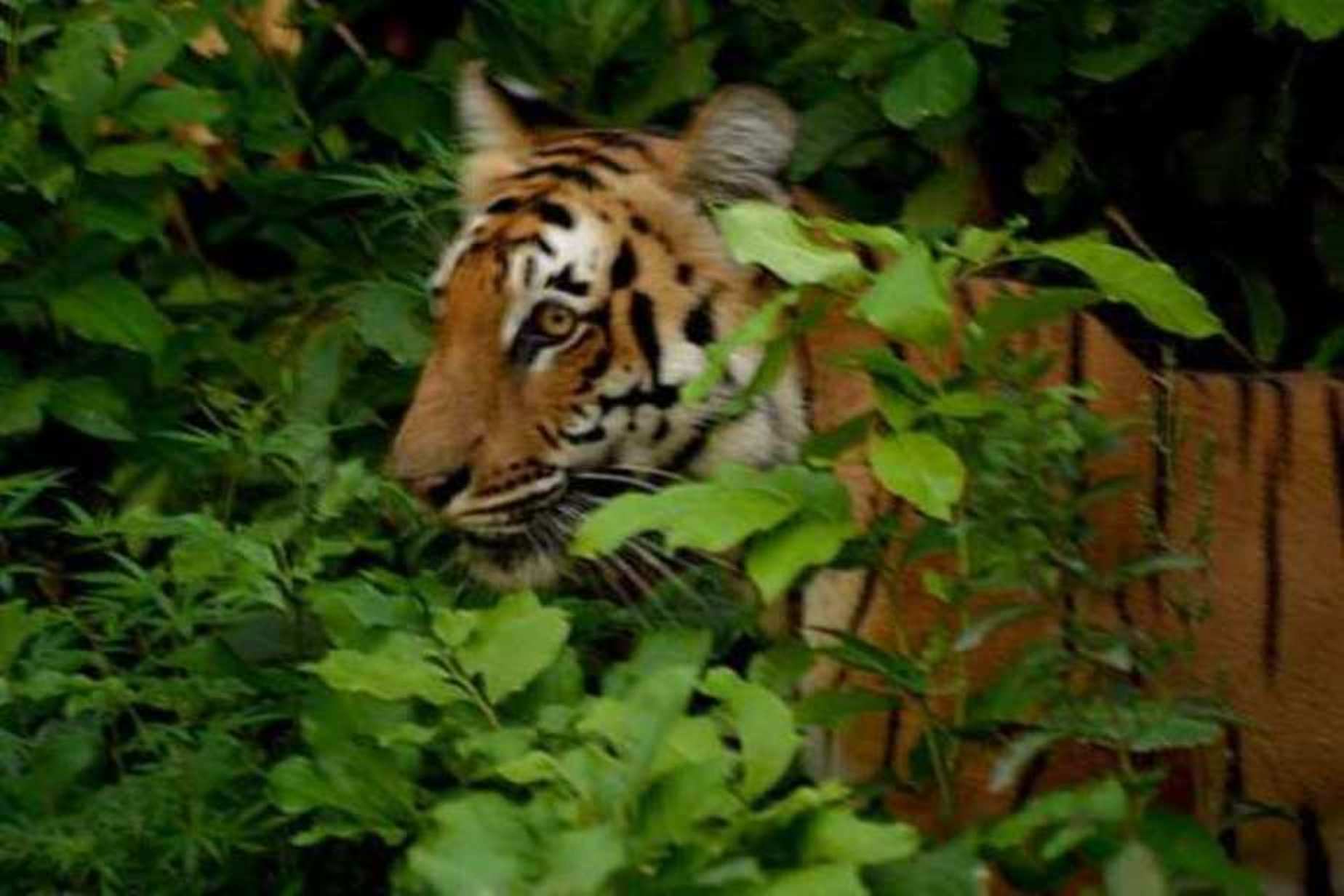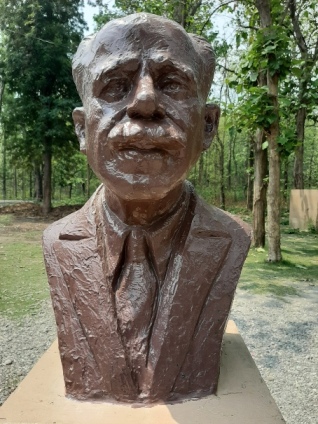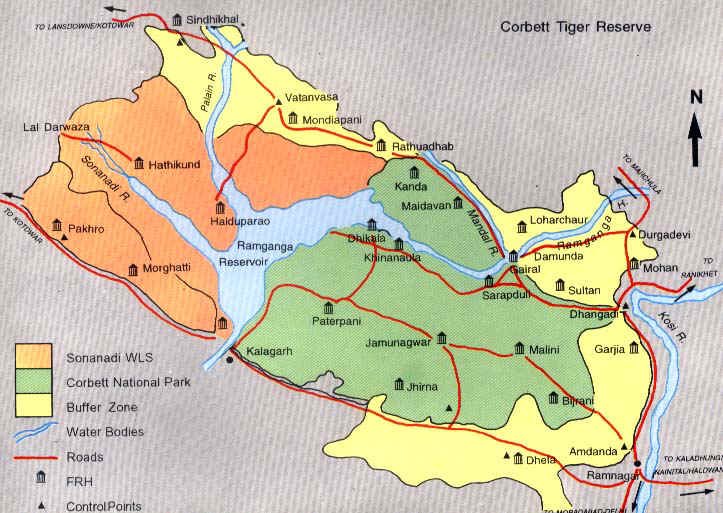Complete Travel Guide to Jim Corbett
Who was Mr. Jim Cobett
The Icon, James Edward Corbett, better known as Mr. Jim Corbett was born at Nainital on 25th July. Jim Corbett was a famous naturalist who spent most of his life in lush Jungles of India. After his primary education in Nainital he worked with Indian Railways as an officer for almost 20 years. He was also a part of Indian armed forces during both the world wars. Jim Corbett proved his prowess with the Gun at the age of 8 and hence started to hunt. As he used to go inside the jungles a lot he became an expert at the same. He could read the signs of the jungle like an open book. He could easily read the sounds of the animals and could imitate them to perfection. With this unique ability he was able to shoot down a lot of Tigers who had become man-eaters . Through his vocal chords he could lure the animals to a face to face meeting and than shoot them down while in ambush.
For his outstanding contribution to conservation and natural history the Government of India bestowed on him the honor of “The Freedom of the Forests” and with his abilities he became the first naturalist in India to start daylight photography of Tiger in their natural habitat.
Where is Jim Corbett National Park
Jim Corbett national park is located in the Uttarakhand state of India. The nearest town to reach Jim Corbett is Ramnagar which comes under the district of Nainital.
The total area of Jim Corbett National Park is 1318 sq. km. which has grown from 520 sq. km. with the inclusion of the Sonanadi Wildlife Sanctuary to the west. The area of 320sq. km. is the core area, closed to human traffic where there is no interference with the wildlife no matter what living condition they are in there for the animals. Around 200kms is the buffer area and the Tiger Reserve includes an additional 798 sq. kms. The altitude ranges from 400 meters to the peak of Kanda at 1,210 meters on the northern extremity. The National Park extends from the outer Himalaya, locally represented by the Siwalik mountain ranges which runs through its middle in an east-west direction, across Patli Dun valley to the foothills of the Middle Himalaya.
Siwalik mountain ranges are formed from the Himalayas erosion products of sand, gravel and conglomerates. Patli Dun is an elevated valley with a virtually level floor through which flows the Ramganga river, the only source of perennial water here. The Ramganga river flows westwards and widens beyond Khinanauli, giving rise to islands known as “sheeshum islands”. West of Dhikala, the sheeshum island gives way to winding strips of alluvial grassland or “Chauds” being the land which was cultivated in historic times. The Chauds provide important grazing for wildlife.
Best Time to visit Jim Corbett
Jim Corbett has subtropical climate and has 3 seasons namely Summers, Winters and Rainy Season. As the main attraction of Jim Corbett is jungle safari and the entry time and exit time for a jungle safari pretty much depends on the dawn and the dusk timings that the area is experiencing at that particular moment hence the seasons plays its role in the decision to visit Jim Corbett.
- Winter Season: (October to February)
The onset of winter seasons starts from October with cool breeze and shorter days marking the beginning of the winter months. The jungle is lush green at this moment as it has just experienced a rainfall season prior and everything appears to be very beautiful.
A large species of different birds finds its abode in the Corbett National Park during this period. During the day time a lot of animals come out on the grasslands for sun basking and hence on a jungle safari its very much possible you can find The Royal Bengal Tiger just lazing around where you are driving through.
In winters you can have a lot of sightings of the water birds.
The temperature during the winter season ranges from 5 degree Celsius to 30 degree Celsius.
- Smmer Season: (March to June):
In Summers the Park touches 40 degree Celsius and the average temperature is around 30 degree Celsius. During this period large mammals like elephants can be best observed in their habitat. As the jungle is also become hot due to rising temperature a lot of wild animals come near the water holes for water as well as to cool themselves hence there is a lot of animal sighting during this phase.
This is also the best time for the photographers as due to increase in wildlife sighting they get perfect shots for their collections.
- Monsoons : (July to September)
As the rains descends down in Jim Corbett the Park closes its Forest Rest Houses for night stay accommodation due to the fear of roads being washed away and also for security reasons of the guests. The Jungle safari is also effected due to the rains and Zones namely Dhikala, Bijrani, Durgadevi and Sitabani are remained shut for the for the day safari. Jhirna and Dhela zone are still open on these months.
During this period a lot of Conferences and Events takes place in Jim Corbett due to the low rates of the resorts in the area. The less crowd also is loved by a lot of visitors.
Flora and Fauna of Jim Corbett
Jim Corbett National Park is home to around 50 endemic species of Mammals, 26 kinds of Reptiles, 7 of Amphibians and nearly 600 species of Birds.
The Flora and Fauna of Jim Corbett is very unique.
Flora of Jim Corbett
Jim Corbett is home to 110 species of Trees, 51 of shrubs, 27 climbers, 37 grasses and bamboos.
Most of the trees are deciduous in nature. The majority of the vegetation cover is made up of the following:
- Sal Shorea Robusta
- Khair Acasia Catachu
- Sain Terminalia Alata
- Bahera Terminalia Beherica
- Haldu Adina Cardifolia
- Shisham Delbergaia sissoo
These form the majority of the trees that are in Jim Corbett National Park.
Corbett is also famous for its Healing Herbs like the Rohini
Facts: The Park is notable for its extensive Sal Forests covering around 73% of the entire area. Sal has a total life of 300 years.
Fauna of Jim Corbett
Jim Corbett National Park is home to around 50 endemic species of Mammals, 26 kinds of Reptiles, 7 of Amphibians and nearly 600 species of Birds.



